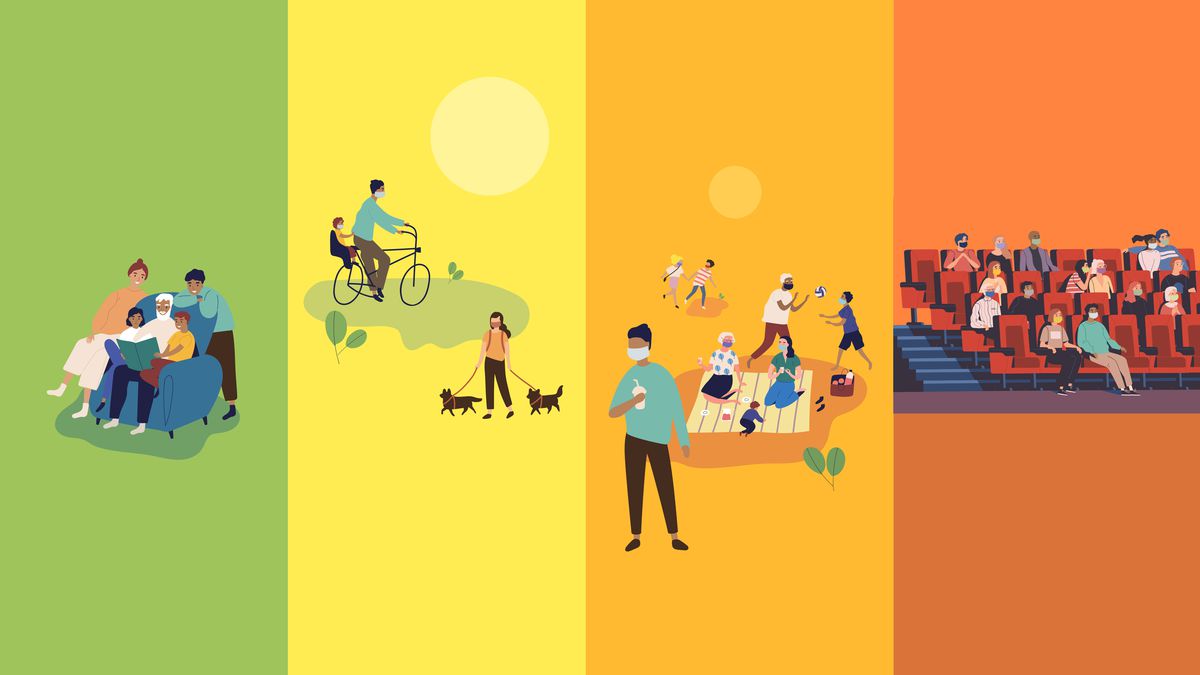Students’ Approach to Socializing during the Pandemic Varies

by Jenna Bloom ‘21
As the Covid-19 pandemic continues, millions of people nationwide are still figuring out ways to socialize with their family and friends, whether that means following CDC guidelines or not. In a survey sent out to Sherwood students last month before national and local cases spiked and new restrictions were announced, results showed an uneven response on how students have chosen to gather.
The survey went out across all grade levels in English classes schoolwide. With 424 total responses, 22 percent of students said that they have seen their friends in person, with both masks and social distancing in November. A sophomore explained how she hangs out with friends while staying safe, saying “we have found so many fun ways to see each other, like socially distanced picnics or photoshoots.”
That option was the most common one, but not by much. Following that, 20 percent of students said they have seen friends in person without masks or social distancing, but were outside for a large majority of time. These answers vary widely from one another, as the first one shows students following CDC guidelines and the second one does not. While the virus is “less likely to spread in outdoor spaces,” according to the CDC, “Covid-19 [still] spreads easier between people who are within 6 feet of each other.”
Fifteen percent of student respondents stated that they have seen friends in person without masks or social distancing, and were inside for a long portion of time. As the weather gets colder, the number of people opting to see their friends inside is bound to increase. In indoor spaces with less ventilation and distancing the risk of infection increases greatly, the CDC says. A majority of students who said they saw friends inside said they kept their circles small. “I see the same group of people pretty much every day,” a junior said. “There have been some Covid scares but overall we’re fairly safe.”
An equal fifteen percent of students said they have not seen any friends in person. Studies show that quarantine fatigue is real, and not seeing people in person can be damaging to one’s personal wellbeing. In a recent poll by the Kaiser Family Foundation, nearly half of Americans said that the coronavirus pandemic has harmed their mental health. A sophomore who has not seen any friends explained that she has “stayed in contact with my friends through social media (mostly Snapchat),” and she has “felt isolated for not hanging out with my friends, especially the ones who have gone out and hung out with other friends.”
Lastly, there was an even split between those who have seen friends in person, just socially distanced, and those who have seen their friends in person, just with masks on. These options combined made up 24 percent of the survey.
Julia Marcus from the Harvard Medical School proposes in an article titled “How to socialize in a pandemic,” the use of harm reduction strategies, claiming that “a harm reduction approach meets people where they are by accepting that it isn’t always possible to eliminate risk. It supports people in making lower-risk — but not necessarily zero-risk — choices that are sustainable for them, and offers strategies to reduce any potential harms.” Some ways to assess risk are monitoring infection numbers in one’s individual community, considering vulnerability to the coronavirus, or evaluating the risk of the activity, which includes its duration and setting.
Fifty-five percent of people who took the survey indicated that they were in a bubble with their friends. A “bubble” is an unofficial term used to describe the cluster of people outside your household with whom you feel comfortable spending time during the pandemic. It’s essentially a mutual commitment to only spending time with certain individuals. A senior elaborated on the bubble that her friend group has been doing, saying “our families are all okay with our bubble, and we social distance from everyone outside of it.” Bubbles have risks, but so is every social interaction in the era of Covid. They are not 100-percent effective, but there are some ways to make sure the bubble is executed safely.
First off, ground rules need to be set. Having a conversation about group expectations increases transparency — this includes conversations about Covid exposure, recent travel activity, and more. Second, know about the health conditions of those within the bubble. If anyone in the group is at-risk, socialization needs to be monitored much more closely to keep everyone safe. Lastly, members of the group need to make sure they are healthy, and no one has gotten sick recently. If an individual has been exposed to Covid or comes in contact with someone who has been exposed, they should stay home for 14 days.